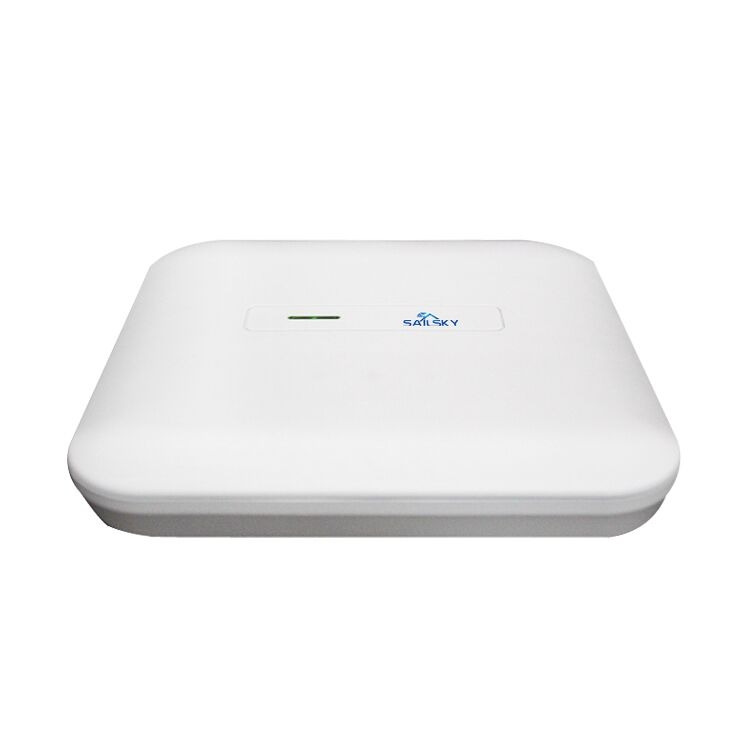Access Point Wi-Fi Ceiling AP
2022.09.20 / By hqt
The Sailsky Wi-Fi Ceiling Access Point
The BL290X is a high-performance, high-speed, and high-power access point Wi-Fi ceiling AP. It is used as an indoor dual-band ceiling AP that can supply 2.4G and 5GHz dual-band wireless services. As a consequence, the wireless network will be more dependable, and the wireless environment will be cleaner. It supports intelligent channel analysis and automated channel selection, both of which are extremely helpful for uniformly dispersing wireless network coverage.

Always Prefer Ceiling AP
We always suggest mounting an AP on the ceiling as it provides more benefits than known to people out there. Some of its benefits will be discussed in the following passages but before that, let us tell you why other options won’t work as efficiently as a ceiling AP
When designing a wireless network, placing access points solely with the help of free software provided by the manufacturer and calling it a day won't cut it for the majority of locations.
This is a very prevalent problem, and the root cause of it is typically unskilled consultants that try to portray themselves as having more experience in the industry than they actually do.
Where should your wireless access points be set up?
Where should your wireless access points be set up if you want to ensure the highest potential level of wireless connectivity? This is a pretty common question, but the response is never the same because the settings for each Wi-Fi network are unique.
Even though there is no standard that is relevant in every situation, there are times when following best practices might be beneficial.
Placing AP in the Lobby
The very first thing that you have to find out is whether or not your customers would rather be in rooms or in halls. In spite of the fact that the response appears to be quite straightforward, a lot of people still miss it.
Location is one of the most important considerations, but the type of access point also has an impact. Due to the improved performance room installation is now preferred over hallway installation. This change occurred a long time ago.
Network Interference
Several of the reasons that follow explain why this is the case, such as the fact that it contaminates the channel with harmful substances. The interference in the network can be decreased or removed entirely depending on where in the room you place your access points. A room installation is the best option since using the walls of the room as an acoustic buffer helps to further reduce channel interference, making it a more desirable alternative.
Equipment that has a low overall power consumption
Our recommendation is that you should always design for the devices that require the least amount of power, which in this day and age would be mobile phones, wearables, and tablets such as the iPad. These electronic devices should be positioned as close as possible to the access point (AP) in order to achieve the best possible performance.
How thoughtful positioning can prove helpful?
Because of the thoughtful positioning of the rooms, users get increased performance precisely where they require it, and the common spaces of the building receive abundant coverage as a result.
Access points for a wireless network should be placed in discreet locations away from high-traffic areas such as hallways when the network is being designed.
It is essential to keep in mind that placement in a hallway is acceptable in certain situations, particularly in an office setting when coverage is your primary aim and your APs would not be too close to one another.
The Method of Attaching APs to the Walls in Practice
Let's get this out of the way first: the utilization of the same access point or antenna will not be beneficial in all regions. Access points are rarely just as effective when put on the ceiling as they are when mounted on the wall, despite the assertions of certain manufacturers that the opposite is true.
According to our findings, putting APs as high up in the ceiling as feasible provides the highest potential level of service to the consumers. The fact that there are fewer impediments for the radio frequency signal to overcome on its route to the devices below is the primary explanation for this phenomenon.
However, the ceiling is not always a workable choice in every situation. Because of this, you need to give extra consideration to the antenna that you purchase as well as the positioning of the antenna on the wall.
You may want to install your access points (APs) on two walls that are adjacent to one another so that the signal can continue to travel in a straight line to your end users.
APs Securing Their Positions on the Ceiling
We almost always suggest positioning your access points on the ceiling. Why?
Putting your access points on the ceiling on the outside has a lot of advantages that make it a good idea.
For example, heating, ventilation, and air conditioning (HVAC) ducts, utility pipes, and other metal fixtures can interfere with the RF signal and reduce wireless performance when placed on the inside of the ceiling; putting an access point below the ceiling can help mitigate these issues.
If you put your APs below the ceiling, you won't be exposing them to the dust, heat, or potential harm that could occur if you put them anywhere else.
Problems with connectivity and poor performance may occur as a direct consequence of all of these contributing factors.
Concluding
Before you decide where to put your access points, you need to give careful consideration to a number of different criteria. The initial steps toward achieving your goals should always begin with careful forward planning and an honest evaluation of where you currently are.
After doing a site study, an optimal WLAN architecture may be designed, which takes into account factors such as the number and kind of access points.
If you are now sure about the type of access point that will be most effective in your environment, you should go ahead and place an order for the Sailsky access point Wi-Fi ceiling AP and get the most out of your Wi-Fi networking at all places around.

